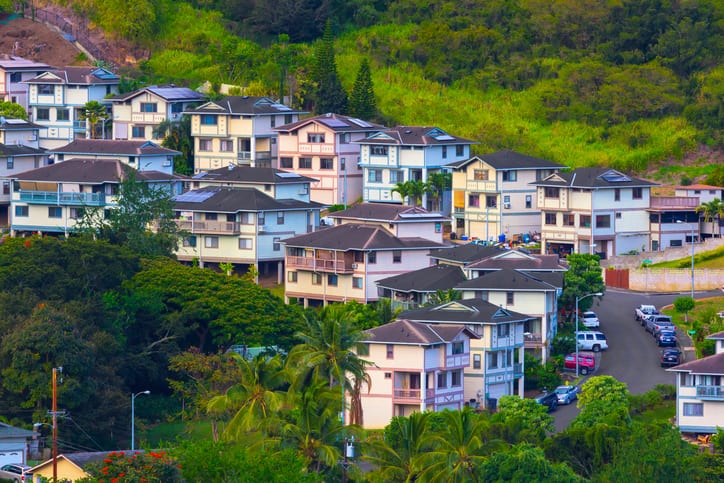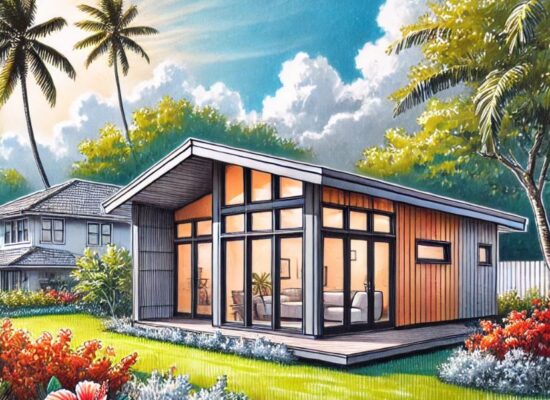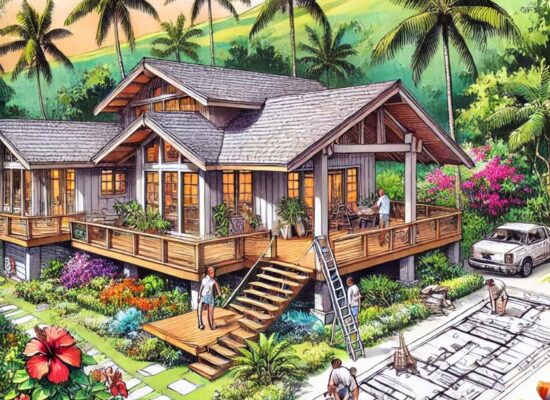- How to Optimize Space In Your New ADU
- Just How Big is a 400 sq ft ADU?
- What is an Accessory Dwelling Unit?
- What’s the 411 with Hawaii ADUs?
- What’s the 411 with Hawaii ADU’s: The FAQs Continued
- The Benefits of Building an ADU on Your Property
- Why Are ADUs So Important in Hawaii?
- Why ADUs Make Financial Sense
- Six Questions to Ask Yourself Before You Build an ADU in Hawaii
- The 9 Basic Requirements for Building an ADU in Hawaii
- Retirement Downsizing in Place with an Accessible ADU
Honolulu’s mayor signed a provision for accessory dwelling units (ADUs) in September 2015. Now, qualifying owners of freestanding, single-family homes have a new way to generate revenue – by renting a secondary residence situated on their property. ADU’s are a response to the Mayor’s Affordable Housing Strategy, developed in response to the shortage of inexpensive rental housing on the island.
It is important to understand that ADU approvals, design and permitting requires adherence to very specific standards. Honolulu’s Department of Planning and Permitting (DPP) discusses frequently asked questions about permitting related to ADU’s at this link.
Frequently Asked Questions
Here we discuss some of the most common questions about ADUs:
Q: What is an ADU?
The DPP specifically defines an ADU as “an accessory or second dwelling unit, including its own kitchen, bedroom, and bathroom facilities, attached or detached from the primary dwelling unit on the zoning lot.”
Importantly, an ADU is subordinate to the primary residence. However, it does not have to be detached from the existing home. While many ADU’s feature new construction, it is possible to remodel some existing single-family homes to create them. However, every ADU design must include a kitchen, a bathroom, and at least one bedroom. Current building codes apply to such renovations/additions.
ADU’s are usually found to the rear or side of the existing dwelling, and they are subject to strict size limitations. For example, an ADU on a lot from 3,500 to 4,999 square feet (SF) in size must be 400 SF or smaller. On a 5,000+ SF lot, ADUs can be up to 800 SF in size.
Q: In what ways are ADUs important?
ADU’s help address Honolulu’s chronic housing shortage, and they provide aging residents a convenient way to downsize.
Relieve Housing Shortage – It is no surprise to those living in Honolulu that the cost of living is substantial. In fact, one site ranks Hawaii’s capital 4th out of 66 U.S. cities, although it is still 14 percent less expensive to live in Honolulu than New York City. However, with rent for a 900 sqr-ft furnished apartment averaging more than $2,000 per month, and utilities averaging more than $250/mo, many workers struggle to find affordable housing. ADU’s address this need.
Aging in Place – ADU’s also offer aging homeowners a unique opportunity to downsize while remaining on the very same property that likely hosted endless parties and other memorable family events over the years. A senior can “age in place” by eventually moving out of the larger primary residence and into the smaller ADU. The homeowner can then rent out the larger home to generate potentially substantial rental income.
Q: Where can an ADU be built?
Zoning is crucial to ADU development. Although there is an important caveat, an ADU may be built on lots zoned R-3.5, R-5, R-7.5, R-10 or R-20. Construction of an ADU is also possible in a Country District with a lot measuring 3,500 SF. The caveat? Even when a lot is appropriately zoned, there must be adequate utility infrastructure in place, and the ADU cannot conflict with existing restrictive covenants. This effectively eliminates ADU’s from consideration in master planned communities or those with homeowners associations. The ADU must also comply with any land use provisions that come with the specific zoning.
When eligible, only a single ADU is possible on a lot with one single-family home on it. This excludes lots with duplex homes as well as those with an existing ohana unit or guest house.
Q: How do ohana units and ADUs compare?
These two kinds of living spaces differ as to maximum size, occupancy, and parking. ADU’s are subject to size restrictions, while ohana units are not. Only family members may live in an ohana unit, while there is no such restriction with an ADU. Finally, ohana units must have two off-street parking spaces, while ADU’s only need one (those less than a half-mile from a rail station have no parking requirement).
It is also important to note that the property owner (or appropriate relative) must live in the primary residence or the ADU. Exceptions exist for serious illness or active military deployment. Leases for ADU’s must be at least six months long. When a property is sold, the primary residence and the ADU must be sold together.
Owner Built Design, LLC is a key resource when you are looking into an ADU. Let me put my decades of experience to work for you. Please contact me today.
 Copyright secured by Digiprove
Copyright secured by Digiprove 



